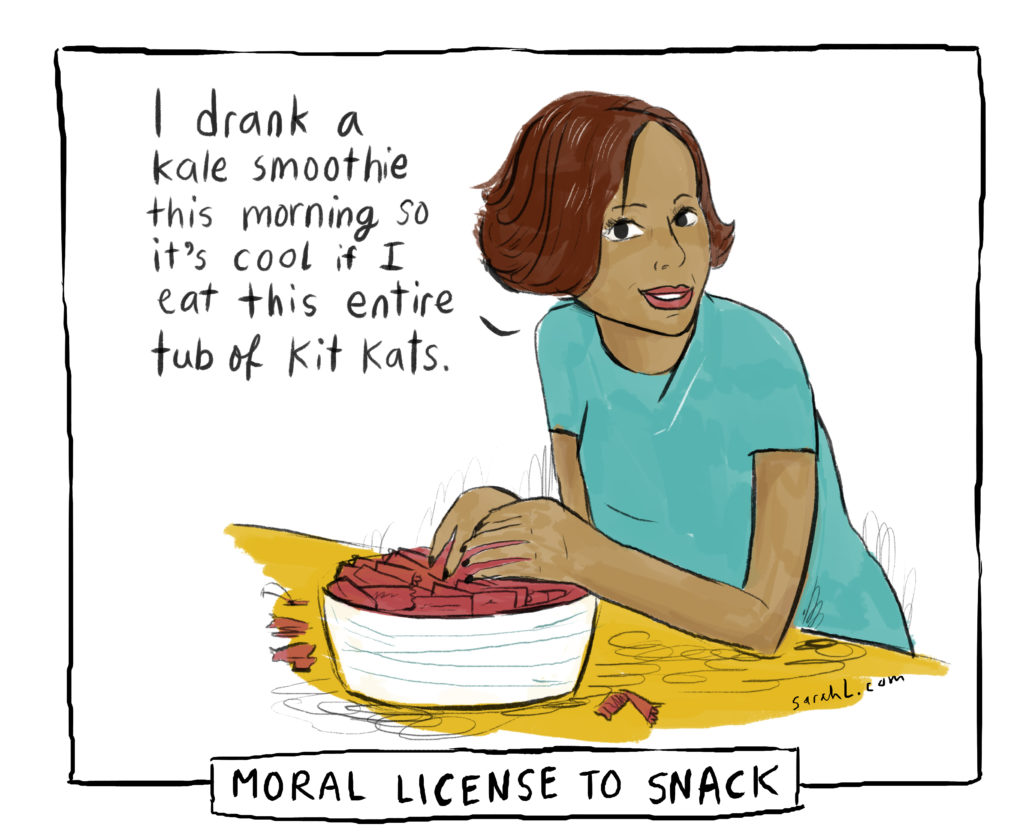“If we nudge one behaviour, we may be ‘un-nudging’ others.” Professor Daniel Read, University of Warwick
Introduction
In this, our eighth article on the new frontiers of behavioural science, we turn our attention to the unintended consequences of its application.
Researchers have identified a series of wider-reaching holistic effects from nudging and steering behaviour which can have a significant impact on the overall outcome of a nudge or intervention. Having a broader understanding of the effects of a nudge - such as displacement effects, licensing, or spillover effects - on all related behaviours, not just the behaviour that is being nudged, is important in order to evaluate if the nudge has a positive outcome on overall behaviour.
This is particularly relevant for some behavioural change interventions, notably behaviours which are repeated frequently over the long term, such as household energy consumption, taking daily medication or exercise. Without this wider understanding an intervention might, at first glance, seem like it has had the desired impact, giving us a false sense of success.
In light of this developing knowledge, we outline five different holistic effects below, focusing particularly on two effects more recently identified - displacement effects and (what we are calling) ‘nudge fatigue’. These are illustrated with some recent, thought-provoking case studies and research.
Five holistic effects
Over the past decade, behavioural scientists have identified five different holistic effects which can all impact on the overall effectiveness of a behaviour change intervention. Some of these effects or concepts can be positive, whereas others may end up neutralising the effect of any nudge, or worse, having a negative impact overall:
- Licensing effects – if we nudge a positive behaviour in the morning, do people ‘nudge back’ in the afternoon and license themselves to do something less ‘good’?
- Compensating effects – if our behaviour has been less than exemplary we might try to compensate by doing something more worthy.
- Positive spillover effects – if we steer behaviour change for one issue, does it also improve other related behaviours?
- Displacement effects – a relatively recently identified effect is if we nudge in one place, does it simply shift behaviour elsewhere?
- Systemic effects - again more recently, researchers are now exploring the idea of ‘nudge fatigue’. If nudges are implemented in multiple contexts of our lives, potentially overloading recipients or making them numb to their effects, might the effect of a single nudge be muted?
Where we were
Behavioural scientists have been aware of the first three of the five effects above for some time now and they are frequently noted and measured.
Licensing and compensating effects: Sometimes people may ‘nudge back’ or license themselves in a series of connected behaviours throughout the day or week. They can, for instance, do something ‘good’ and because of this feel permission to then do something ‘bad’– a concept known as a licensing effect (see cartoon).
|
Conversely, if we feel our behaviour has been less than exemplary we might try to compensate by doing something more worthy, purging ourselves of the tainted past – known as a compensating effect. ‘Giving Tuesday’, strategically positioned after the materialistic frenzy of Black Friday may leverage this psychological effect as we try to mop up the guilt from spending a lot on ourselves by donating to charity a few days later. Journalist Michael Rosenwald of The Washington Post sums up the concept of licensing and compensating effects particularly well. He says: “We drink Diet Coke – with Quarter Pounders and fries at McDonald’s. We go to the gym – and ride the elevator to the second floor. We install tankless water heaters – then take longer showers. We drive SUVs to see Al Gore’s speeches on global warming.” Each behaviour offsets the other, producing a net impact of zero. |

|
Several studies have found evidence of licensing and compensating effects, from purchasing environmentally friendly products to healthy eating behaviours. For example, energy economist Lucas Davis observed licensing effects in energy consumption. He has shown that consumers who bought energy-efficient products increased their energy usage so far that they offset any potential gains. For example, buying an energy efficient washing machine led U.S. consumers to increase clothes washing by 5.6% - which offset any potential energy-savings.[1]
Positive spillover effects: Spillover effects occur when we initiate a change in one behaviour which then creates changes in other related behaviours too. Tracking behaviour in order to spot potential spillover effects is crucial and recent field experiments have found evidence of these effects. For example, prompting hotel guests to pledge to reduce their impact on the environment by reusing their hotel towels led to spillover effects during their hotel stay. Researchers found that guests were not only more likely to reuse their towels, but that they were also more likely to carry out other more environmentally friendly behaviours such as turning the lights off. So, the overall behavioural impact might be much more powerful than the initial objective.[2]
Another example of spillover effects comes from a successful trial conducted in Saudi Arabia. The intervention attempted to increase the number of women working outside of the home by correcting their husbands’ perceptions of the injunctive social norms related to allowing their wife to have a job. A secondary outcome of this study was that in addition to more men encouraging their wives apply for jobs, they signed them up for driving lessons too.[3]
Current developments
We still need to better understand the effects outlined above. Although we have a stronger understanding than perhaps we did ten years ago, there is more to grasp and explore.
On top of this, researchers have been adding to the collection of holistic effects as they design and run increasingly varied trials and studies and investigate potential secondary outcomes to better understand new facets of applied behavioural science. As the application of behavioural science grows and becomes more widespread, new areas are now being discovered thanks to some inquisitive and comprehensive analysis, two examples of which we detail next below.
Firstly, researchers have identified an impact which is being called displacement effects.
Displacement effects: The displacement effect can occur when we appear to ‘nudge’ behaviour successfully but, in fact, have merely displaced the behaviour, shifting the location or time in which it is performed. This ultimately results in a ‘zero impact’ outcome in terms of behaviour change.
A fascinating and recent example of a displacement effect comes from research by the UK regulator, the Financial Conduct Authority (FCA) on credit card repayments. Credit card debt is a growing concern in the UK (and indeed many other Western countries); as of May 2019 credit card debt now stands at nearly £73 billion across a total of 30 million card holders – nearly half the population.[4] Each household in the UK now has an average of £2,688 unpaid on credit cards.[5] Around 3.3 million credit card holders are in what’s been termed ‘persistent debt’ by the FCA. With this alarming situation in mind, the FCA wanted to test if making changes to the design and message of someone’s credit card bill might nudge them into repaying debt faster.
They drew on some well-known research published in 2009 by Neil Stewart and other behavioural economists which found that consumers seem to anchor to the minimum repayment figure on their credit card bill, using that as a reference point or guide for how much to repay.
Analysis by the FCA of people’s existing repayment behaviour also showed that many people usually set up a direct debit to repay the minimum repayment and then make ad-hoc manual repayments throughout the year to repay the principal debt chunk by chunk.
When the FCA trialed removing the anchor of the minimum repayment figure from people’s actual credit card bills, they were surprised by their results: typical repayment behaviour did change, but not as expected. Promisingly, 1 in 5 people switched from paying the minimum repayment to a higher fixed repayment, resulting in a total of nearly 50% of card holders making an automatic fixed payment. A few more people also chose to repay in full.
However, after 7 months the picture was less promising. As people’s credit card debt continued to grow, the required minimum payment caught up with the previous fixed payment some people had set so only 7 in 100 people were now paying more than the minimum repayment. Overall credit card debt had also not declined due to two reasons:
- consumers offset higher automatic payments with lower manual, or ad-hoc payments; and partly because
- it discouraged more people from setting up a direct debit at all (24.9% rather than 19.8%), perhaps leaving them more susceptible to forgetting to make any repayment. [6]
This is a notable example of the displacement effect - nudging people to make higher automatic repayments displaced the ad-hoc manual repayments they had been making, the nudge even put some people off setting up direct debit repayments altogether. This finding shows why it’s important to track behavioural outcomes both over a sufficient amount of time and more broadly in comparable contexts. Christopher Woolard, Executive Director of Strategy and Competition at the FCA emphasised “this is something that we would never have discovered without choosing the right measures and monitoring them over a decent amount of time.” He advises “choose your outcomes carefully. Unless we measure the precise outcomes we are aiming for, it is easy to see success where – in fact – there is none.” [7]
Displacement effects have also been illustrated in an earlier field trial looking at flu vaccination uptake. At first glance, it appeared that automatically opting people in to receive a flu shot at a clinic - by sending them a letter notifying them of a scheduled appointment date - had a big impact on behaviour. 56% of patients who received the letter kept their given appointment as opposed to just 5% of a second group of patients who were instructed to phone and schedule their appointment. However, when researchers tracked the uptake in vaccination appointments over the longer term, they found that much of the uptake was explained by patients who usually received their flu vaccination from another clinic and had merely switched surgery.[8]
In the trials above, the overall impact was neutral; credit card holders were not repaying their debt any faster following the intervention and no more patients were receiving their flu jab. In some cases, displacement effects might even have negative consequences in the long term; nudging in the short term might annoy people to the extent that they take action to ensure they can’t be nudged in the future.
In another study, Christina Gravert and Mette Trier Damguard partnered with one of Denmark’s largest charities to see if they could help to boost donations from existing donors on its mailing list. They tested whether sending an email reminder one week after the charity’s first email request for donations had any effect. Whilst it did increase donations on that occasion, the number of un-subscriptions to the charity's mailing list also increased from 2.1% to 3.7%, a considerable impact. Moreover, those who unsubscribed were valuable donors who had previously donated to the charity.[9] Therefore, in the long run, the charity lost out. Nudging in the short term may have cost them valuable donations in the longer term. Without accounting for these hidden costs, the charity may have overestimated the impact of the email reminders and assumed the nudge was successful.
‘Nudge fatigue’: The final effect of the five outlined in this article is what we might call systemic effects - or perhaps ‘nudge fatigue’. Current interventions by behavioural scientists often involve things like extra pop-up computer menus, hover messages, micro-animation, feedback, mailings, additional post-it notes, financial and other incentives, or even signing pledges to put up on the wall. Practitioners and academics are also now recognising the potential impact of multiple nudges implemented at the same time. Given the growth of the science, we could soon get to a point where people are so overloaded with simultaneous nudges, none are salient or attention grabbing. Rather like the phrase ‘urban clutter’ used by traffic and city-design experts, we may end up with so much ‘nudge-clutter’ that the impact of a nudge could be muted.
For example, Peter Ubel, physician and behavioral scientist at Duke University makes a valid observation regarding the nudges increasingly used in the healthcare sector, questioning whether we may start to see ‘nudge fatigue’: “There are only so many pop-up windows, so many feedback letters, a physician can receive before ignoring all incoming signals.” [10]
Another example is online retail where ‘pressure selling’ has become ubiquitous. Go to buy airline tickets, train tickets, concert tickets or make a hotel booking, and you’ll likely be bombarded by messages such as “Last booked 10 minutes ago!” or “25 people currently looking at this route!” which draw on behavioural and psychological science concepts such as social norms (when we want to do what others are doing) and scarcity bias (when we want something more if it is in limited supply) or the anticipation of loss and the fear of missing out.
Whilst there is evidence that in isolation these types of messages can spur us into making a booking earlier and more quickly than we might otherwise have done, the proliferation of these messages on so many platforms is causing the tide to turn. Consumers are becoming numb to their original effects, especially if the messages are exaggerated – or as one recent study found, in some cases false and actually randomly generated.[11]
As the application of behavioural science becomes more widespread, it will be valuable to try to measure these longer term, broader systemic impacts. To evaluate any of these five effects, interventions have to be designed in a way that allows them to monitor a wide breadth of behaviours, not just the immediate impact of a nudge, but also the longer term impacts over time - ideally for several months or more - and the impact on other related behaviours.
Conclusion
There is a clear need to further research such holistic effects, particularly systemic effects and displacement effects which are relatively new and not yet fully explored. As Daniel Read says in the opening quote, it’s important to know if we might actually be ‘un-nudging’ behaviour, rather than nudging. All of these effects increasingly deserve our attention, both for how to design and effectively evaluate any behavioural intervention and for how to best shape and guide the application of behavioural science as it evolves and becomes even more frequently applied.
New Frontiers in Behavioural Science Series:
Article 1 - The Past, The Present and The Future
Article 2 - Default Settings - The most powerful tool in the behavioural scientist's toolbox
Article 3 - Social norms and conformity part 1
Article 4 - Social norms and conformity part 2
Article 5 - System 1 and System 2 thinking
Article 6 - When is choice a paradox?
Article 7 - Beyond mugs and wine
About the authors:
Crawford Hollingworth is co-Founder of The Behavioural Architects, which he launched in 2011 with co-Founders Sian Davies and Sarah Davies. He was also founder of HeadlightVision in London and New York, a behavioural trends research consultancy. HeadlightVision was acquired by WPP in 2003. He has written and spoken widely on the subject of behavioural economics for various institutions and publications, including the Market Research Society, Marketing Society, Market Leader, Aura, AQR, London Business School and Impact magazine. Crawford is a Fellow of The Marketing Society and Royal Society of Arts.
Liz Barker is Global Head of BE Intelligence & Networks at The Behavioural Architects, advancing the application of behavioural science by bridging the worlds of academia and business. Her background is in Economics, particularly the application of behavioural economics across a wide range of fields, from global business and finance to international development. Liz has a BA and MSc in Economics from Cambridge and Oxford.
[1] Davis, L. W. (2008) Durable goods and residential demand for energy and water: evidence from a field trial. The RAND Journal of Economics, 39 (2): 530-546.
[2] Baca-Motes, K., Brown, A., Gneezy, A., Keenan, E.A., and Nelson, L.D., “Commitment and Behavior Change: Evidence from the Field” Journal of Consumer Research, Vol. 39, Feb 2013
[3] Leonardo Bursztyn, Alessandra L. González, and David Yanagizawa-Drott. "Misperceived Social Norms: Female Labor Force Participation in Saudi Arabia." NBER Working Paper No. 24736, June 2018. https://www.povertyactionlab.org/sites/default/files/publications/5548_Misperceived%20Social%20Norms_June2018_1.pdf; https://www.povertyactionlab.org/evaluation/effects-misperceptions-social-norms-female-labor-force-participation-saudi-arabia
[4] https://www.fca.org.uk/publications/research/research-note-helping-credit-card-users-repay-their-debt-summary-experimental-research
[5] https://www.independent.co.uk/news/business/news/credit-card-debt-household-bank-of-england-consumer-november-uk-economy-a8712271.html
[6] Paul Adams, Benedict Guttman-Kenney, Lucy Hayes and Stefan Hunt, “Helping credit card users repay their debt: a summary of experimental research” Financial Conduct Authority, July 2018; https://www.fca.org.uk/publication/research/research-note-helping-credit-card-users-repay-their-debt-summary-experimental-research.pdf
[7] https://www.fca.org.uk/news/speeches/prisoners-wellness-programmes-and-rats-hanoi-why-fca-tests-its-interventions
[8] Chapman, G.B., Li, M., Leventhal, H., Wisnivesky, J., Leventhal, E.A. (2014). Defaults for influenza vaccination appointments in ‘Judge, Nudge, Dodge‘ presented at the SJDM conference, Nov 2014
[9] Damguard, M.T. and Gravert, C. “The hidden costs of nudging: Experimental evidence from reminders in fundraising” Journal of Public Economics, Volume 157, January 2018, Pages 15-26
[10] https://www.forbes.com/sites/peterubel/2016/07/15/what-behavioral-economic-interventions-get-wrong-about-improving-healthcare/#21c3a6f42ff2
[11] Mathur, A. et al (2019) ‘Dark Patterns at Scale: Findings from a Crawl of 11k shopping websites’[1] Mathur, A. et al (2019) ‘Dark Patterns at Scale: Findings from a Crawl of 11k shopping websites’



